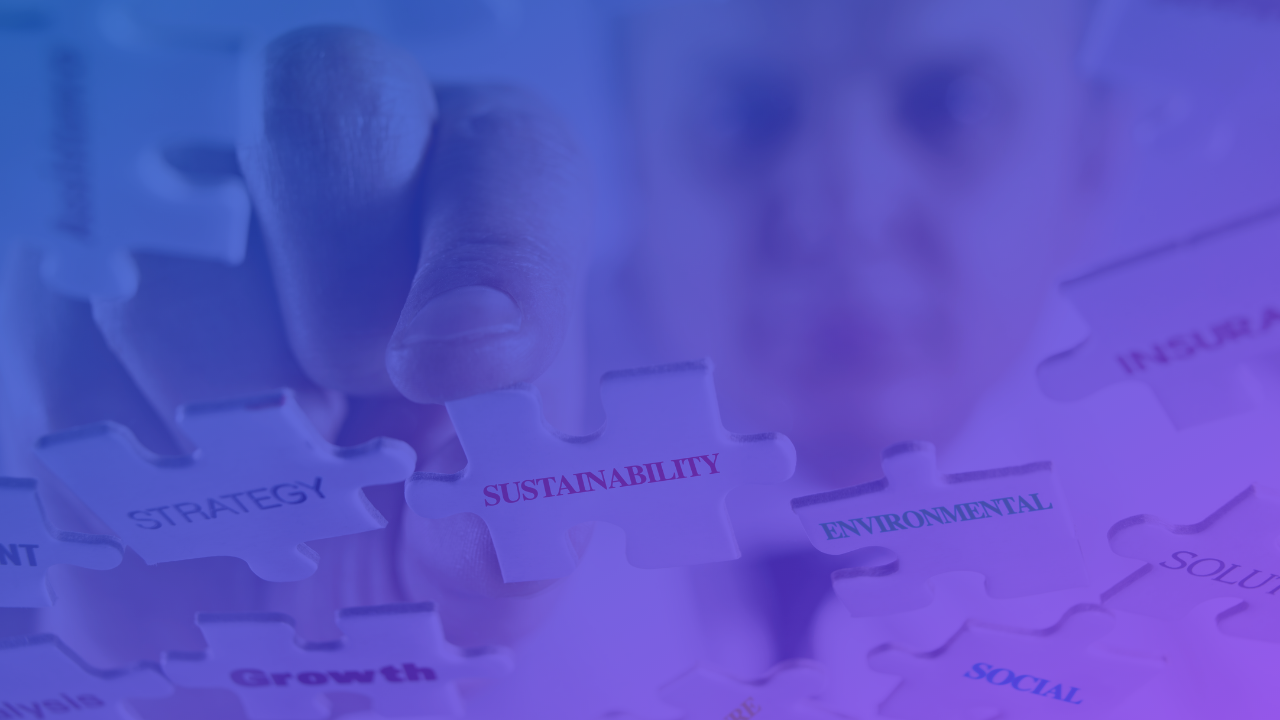On 11/08/2021, the first-panel discussion and presentation session at the 6th International Conference on Management in Emerging Markets (ICMEM) 2021 brought an interesting topic relevant to the current business and economic conditions, namely The Next Phase for Sustainable Business Model. Three outstanding speakers presented in the first session, namely Fajrin Rasyid B.Eng, the representative from Telkom Indonesia, Prof. Wawan Dhewanto, the representative of the School of Business and Management, ITB, and Prof. Benny Tjahjono, the representative of the Faculty Research Centre for Business in Society, Coventry University.
Sustainable business is characterised by growth, return on capital and risk management. Companies focusing on sustainability will always evaluate each business portfolio to determine the potential impact of a trend (such as climate change) that will lead the company to a new opportunity. By implementing a sustainable system, companies can increasingly manage the risks of any sustainable business activities and turn them into new opportunities by creating new value for the environment. Also, sustainable companies will focus on increasing returns on capital, such as reducing operating costs, managing value chains, and others.
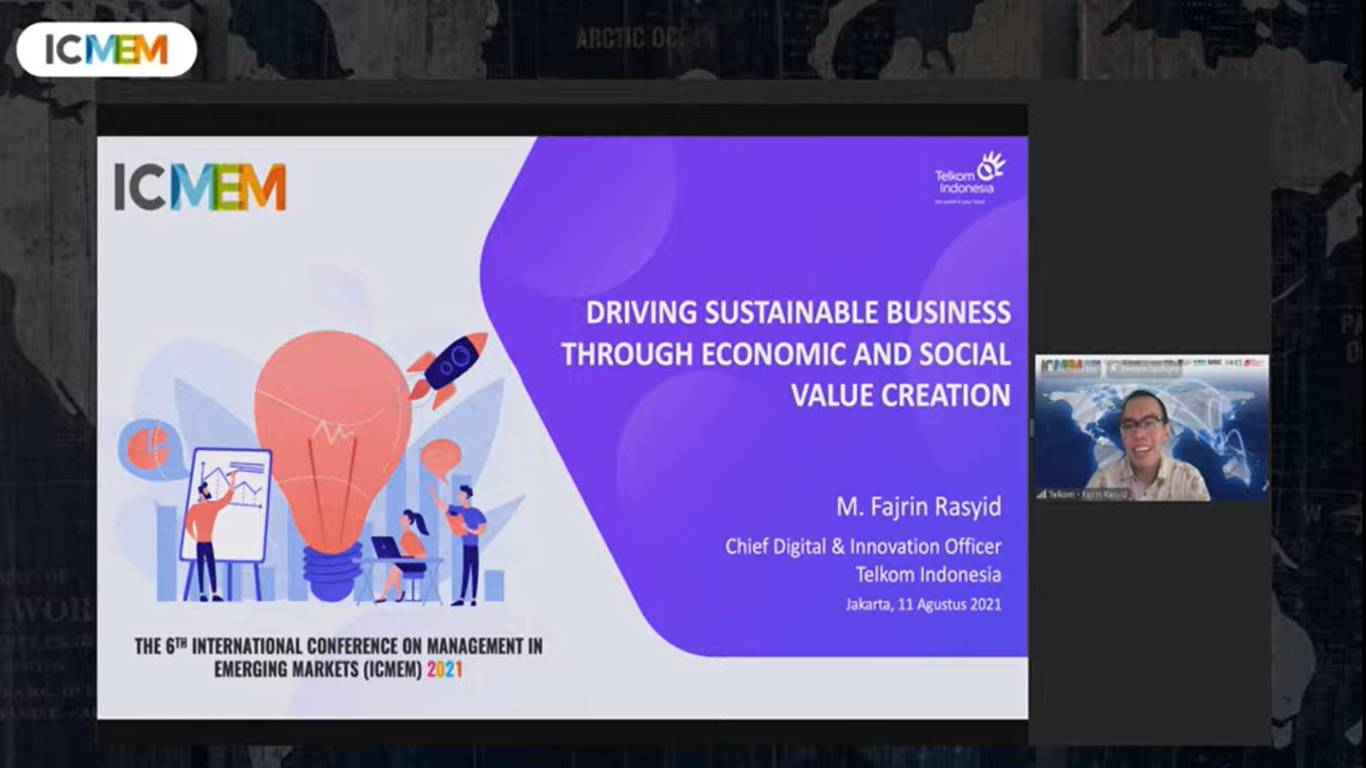
Sustainable business leads the company into a mature company with four spectrums. First is the CSR programs; a business can run and benefit from the support of the community and the environment. With CSR programs, the company will return it all to the community and the environment. The second is compliance-driven; every business activity must be in line with company and government regulations. The third is a reactive change to sustainability, following changes in trends following global topics. Fourth is implementing a sustainable business model; benefits earned are not only for companies but for the environment.
“Sustainable business can improve the company performance; in addition to increasing income and profit, the company can also solve social and environmental problems that occur”, said Fajrin.
One form of sustainable business realisation is impact investment. Impact investment is similar to investment in general. The difference is that impact investment focuses not only on financial return but also on creating a positive new value for society and the environment, certainly in line with the points of SDGs.
“Telkom Indonesia has implemented a sustainable system, especially impact investment in its business process, as seen from the mission statement in line with the SDGs points, especially in the four main areas: MSME, education, agriculture and health”, said Fajrin.
Fajrin also added that in addition to implementing Digital Telco System with internal and external approaches and providing connectivity, platform and best service for customers, Telkom Indonesia also collaborates and invests in several companies related to the four main areas to create new value that impacts the environment and society.
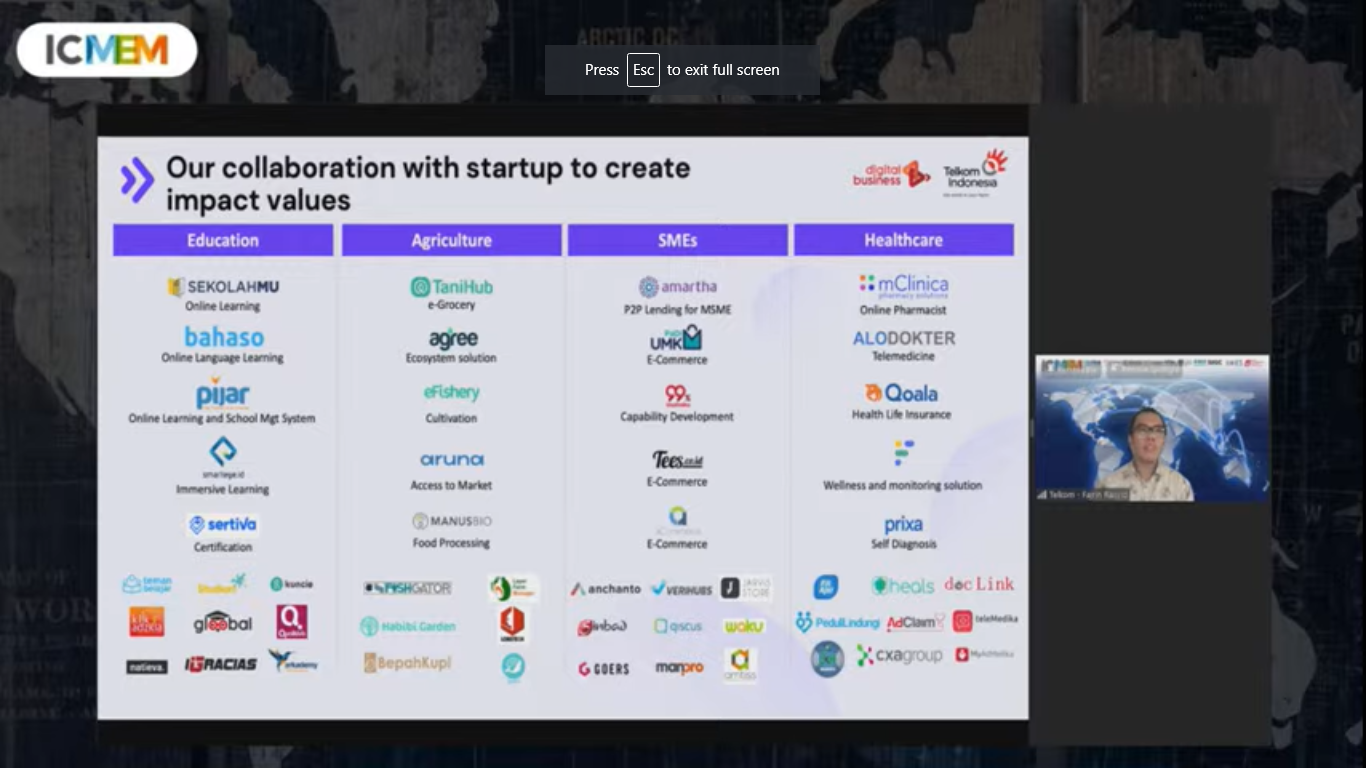
Sustainable business models are also being applied by entrepreneurs who start and develop their businesses in Indonesia. In other words, this business model has been applied in the entrepreneurship ecosystem.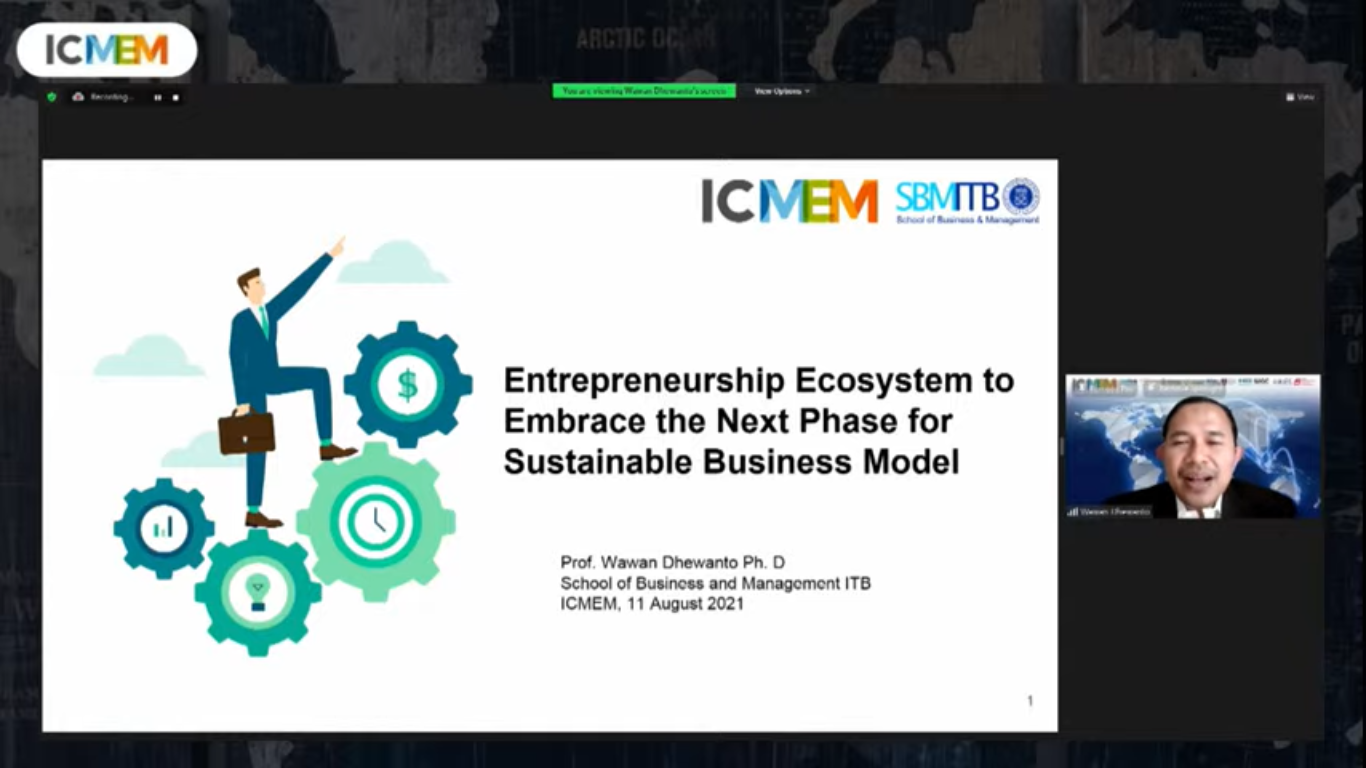
“The implementation of a sustainable business model is motivated by several issues in Indonesia, such as the increased pollution, illegal logging, and also economic inequality in the community. Economic inequality among peoples results in an increase in the GINI index (an index that compares population and people’s income), so the economic growth is only enjoyed by 20% of the high-income population”, said Wawan.
In addition, new problems and issues arise due to the COVID-19 pandemic, for example, a new gap in almost all systems and connections in business. It automatically becomes a barrier to a business for developing and increases the poverty, hunger and low education in Indonesia.
Wawan added that several important elements occurred in business and entrepreneurship during the COVID-19 pandemic, namely the lack of operational cash flow, decreasing demand for goods and services, some businesses closed, declining new clients, and some significant changes in business strategy.
Some solutions to solve the problem in a sustainable business are implementing digitisation systems, improving product capabilities, and creating innovation to survive. There are also other ways to improve Indonesia’s economy, like applying the rural entrepreneurship model by collaboration between stakeholders in realising a sustainable economy.
“Rural Entrepreneurship not only focuses on market development but also on improving the villagers’ economy by utilising the business potential and opportunities contained within the village”, said Wawan.
There are three main aspects: economic sustainability (village economic growth, increasing employment, increasing village and community income), social sustainability (optimising village potential, increasing community efforts to harness village potential and community empowerment), and market sustainability (Creating market opportunities and business connections).
Furthermore, a sustainable business is identical to a business model called a circular economy. This economic process is about selling, buying and using goods or services and how used products can be reprocessed into something of new value.

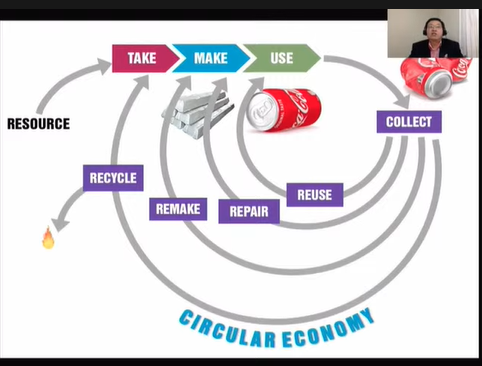
“The application of Circular Economy is in line with the twelfth SDGs point. In contrast to the linear economy, the circular economy has restorative and regenerative characteristics (cradle to cradle). Thus, the life cycle of a product is longer than the linear economy system”, said Benny.
Circular Economic has several advantages, such as minimising the consumption of limited resources and raw materials in the manufacture of products, keeping products at the highest utility and value by maximising recirculation and minimising waste that can end up in landfills or combustion. In other words, it is a circular economy.
Benny added that there is a butterfly diagram inside the circular economy, meaning there are biological and technical materials used to run the process of the circular economy. The focus in the right area of the butterfly diagram is the increase in circularity, lifetime and value of a product by reusing, repairing, remanufacturing and recycling methods. In comparison, the focus of the left area is product material efficiency, waste elimination, pollution prevention, and cascading both biologically and technically.
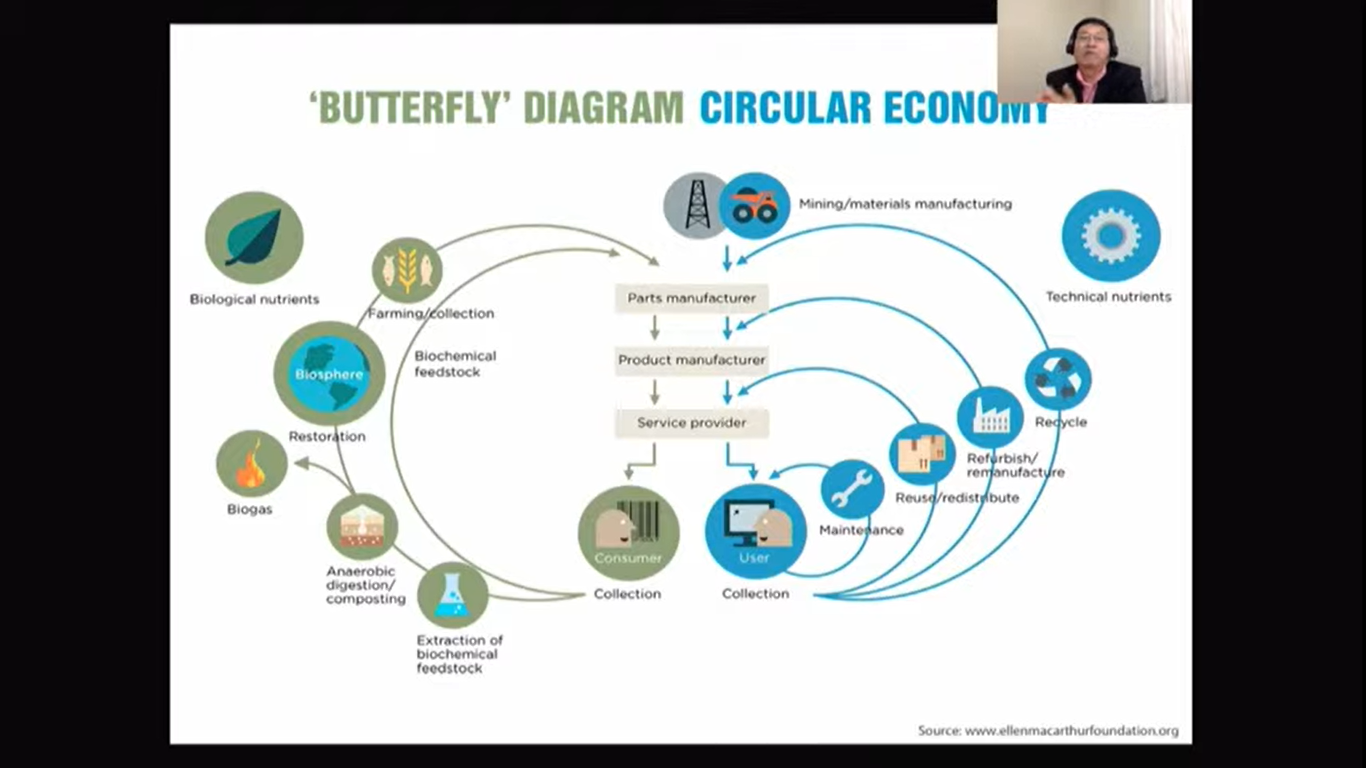
Several business models can be used in the circular economy, such as:
- Dematerialisation (transforming the physical/real shape of a product into a digital or virtual form. Example: Netflix)
- Product/service on demand (providing products/services on request. Example: 3D Printing),
- Recovery of Secondary Materials/by-products (creating products from recycled secondary material)
- Repairing, refurbishing, remanufacturing, and reconditioning (creating a product that has a new function in a system)
- Performance-Based (Pay per Use) – PSS (Delivering products based on the results or performance of those products, for example, Printing Services, paid per printed result).
“Circular Economy is not only about to recycle, waste management, pollution reduction, and environmental problems, but about how SDA is managed effectively and efficiently, preventing waste, the circular process for use and reuse, mapping material flow and other supporting processes,” said Benny at the end of the presentation.
Written by Student Reporter (Hutahaean Andina Putri Melinda Gamaliel, Management 2021)




